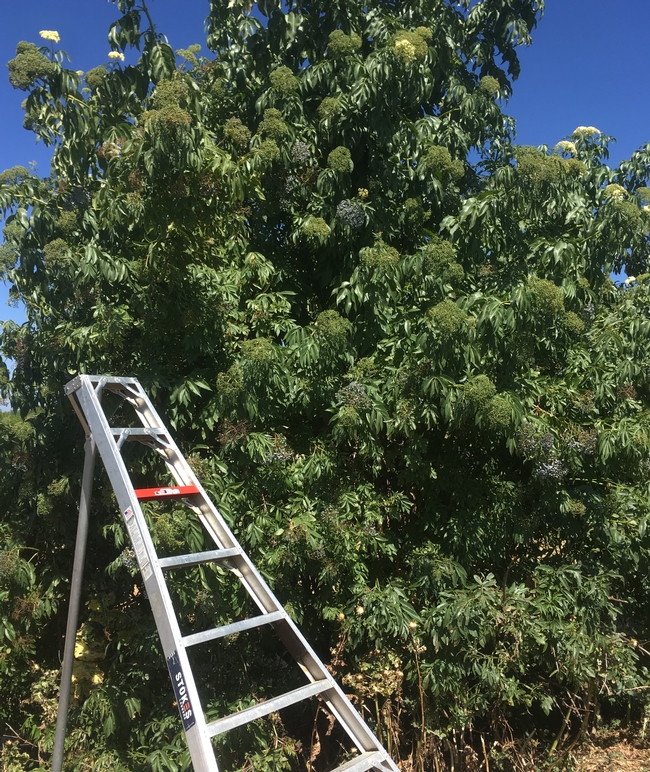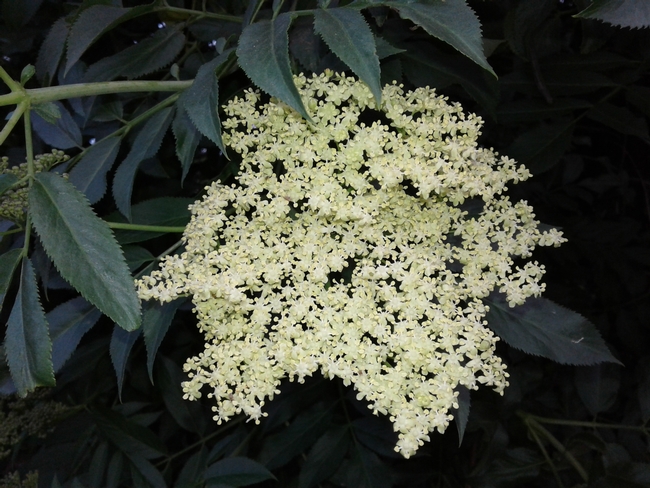New guide shows how elderberry activates hedgerows, ecologically and commercially
A farm-edge hedgerow can be more than a boundary or barrier. When it comprises blue elderberry, it can be a way to integrate biodiversity in an often-simplified agricultural landscape – and connect with a legacy of stewardship and use by California's Native peoples.
A new guide, published by UC Agriculture and Natural Resources, provides detailed instructions and advice for California farmers on growing, harvesting and marketing blue elderberry. It is available as a free download in the UC ANR catalog at https://anrcatalog.ucanr.edu/Details.aspx?itemNo=8709.
“It's the only publication of its kind, that we know of, that focuses on commercial production of a native species from within a hedgerow, which people normally think of as a conservation feature,” said Sonja Brodt, one of the publication's authors and associate director of UC ANR's Sustainable Agriculture Research and Education Program.
In addition to illustrating the plant's many ecological benefits, “Producing Blue Elderberry as a Hedgerow-Based Crop in California” highlights the economic viability of the products made from its flowers, berries and other components.
“Consumer interest in elderberry products is booming,” said Brodt, “and blue elderberry has the potential to meet local needs with a locally adapted species that is climate-resilient, and can be produced in a relatively low-input way that supports – rather than displaces – our native ecosystems.”
The guide incorporates the findings of a UC SAREP project exploring the farm management practices, nutritional content and market potential of elderberry products. And Brodt emphasized that this resource also draws upon the deep knowledge of Indigenous people, as well as best practices of growers such as Katie Fyhrie, formerly of The Cloverleaf Farm in Dixon and another author of the guide.
“We originally got inspiration to do this work from local farmers who are pioneering the use of blue elderberry harvested on their farms, and from Native Americans in California who have long stewarded and utilized blue elderberry for food and other cultural uses,” Brodt explained.
The other publication authors are Gwenael Engelskirchen, sustainable supply chain analyst for UC SAREP; and Katie Uhl, graduate student researcher; and Alyson Mitchell, professor in UC Davis' Department of Food Science and Technology.




Posted by Jana on September 20, 2021 at 6:00 AM